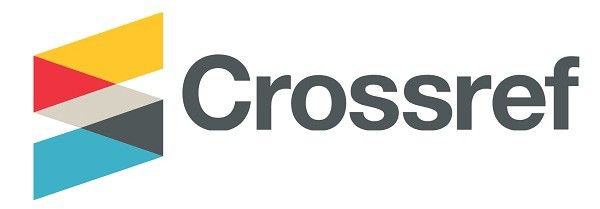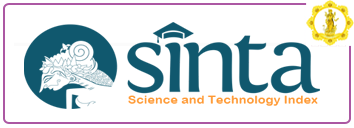Pembelajaran Berbasis Multimedia: Upaya Memahami Keberagaman Gaya Belajar Anak
DOI:
https://doi.org/10.25078/jpm.v5i2.857Keywords:
learning, multimedia, learning styleAbstract
This writing discusses about a way to understand the varieties of children’s learning styles in environment of formal school. One of the ways that will be discussed is by designing a learning based on multimedia. The research uses an approach which vies some concepts existed in the variable. It is called by library research. The result of this research shows that children’s learning styles generally are divided into three styles, they are auditory, visual, and kinesthetic. By using multimedia approach in teaching, it will help teacher in understanding various styles of children’s learning. It is because of multimedia consist of the components, such as media and audio media and visual media have been integrated in multimedia. Instead of multimedia which is designed well can stimulate children’s attention in learning process so the children are interested to follow the learning and all of aspects that are needed by children.
Downloads
References
Beydogan, H. O., & Zelnel Hayran. (2015). The Effect of Multimedia-Based Learning on the Concept Learning Levels and Attitudes of Students. Eurasian Journal of Education Research, Issue 60, 261-280.
Bire, A. L., Geradus, U., & Bire, J. (2014). Pengaruh Gaya Belajar Visual, Auditorial, dan Kinestetik Terhadap Prestasi Belajar Siswa. Jurnal Kependidikan: Penelitian Inovasi Pembelajaran, 44(2). https://doi.org/10.21831/jk.v44i2.5307
Binanto, Iwan, (2010), Multimedia Digital: Dasar Teori dan Pengembangannya, Yogyakarta: Andi Offset.
Bobbi DePorter, Mark Reardon, Sarah Singer-Nourie, (1999), Quantum Teaching: Orchestrating Student Success, Boston: Allyn and Bacon. Terjemahan Ary Nilandari, (2008), Quantum Teaching: Mempraktikkan Quantum Learning di Ruang Kelas. Bandung: Mizan Pustaka
Butcher, K. R. (2006). Learning from Text with Diagrams: Promoting Mental Model Development and Inference Generation. Journal of Educational Psychology, 98(01), 182–197. https://doi.org/10.1037/0022-0663.98.1.182
Departemen Pendidikan Nasional, (2008), Kamus Bahasa Indonesia, Jakarta: Pusat Bahasa.
DePorter, B., & Mike, H. (2010). Quantum Learning (A. Abdurrahman, Penerj.). Bandung: Kaifa.
Gunawan, G., Harjono, A., & Imran, I. (2016). Pengaruh Multimedia Interaktif dan Gaya Belajar Terhadap Penguasaan Konsep Kelor Siswa. Jurnal Pendidikan Fisika Indonesia, 12(2), 118–125. https://doi.org/10.15294/jpfi.v12i2.501
Halim, A. (2012). Pengeruh Strategi Pembelajaran dan Gaya Balajar Terhadap Hasil Belajar Fisika Siswa SMPN 2 Secanggang Kabupaten Langkat. Jurnal Tabularasa PPS UNIMED VOL. 9 No. 2, 141-159.
Hermawan, Irwan, (2017), Pengaruh Penggunaan Multimedia Presentasi Terhadap Peningkatan Kemampuan Mengklasifikasikan Tumbuhan Sebagai Obat Tradisional, Journal Teknologi Pendidikan dan Pembelajaran Sekolah Tinggi Keguruan dan Ilmu Pendidikan Garut, Volume 2, Nomor 1, h. 27-38.
Khodijah, Nyanyu (2014), Psikologi Pendidikan, Jakarta: RajaGrafindo Persada.
Mayer, R. E. (2009). Multimedia Learning: Psrinsip dan Aplikasi (T. W. Utomo, Penerj.). Yogyakarta, Indonesia: Pustaka Pelajar.
Mayer, R. E., Bove, W., Bryman, R., Mars, R., & Tapangco, L. (1996). When less is more: Meaningful learning from visual and verbal summaries of textbook lessons. Journal of Educational Psychology, 64–73.
Moreno, R., & Mayer, R. E. (1999). Multimedia-Supported Metaphors for Meaning Making in Mathematics. Cognition and Instruction, 17(3), 215–248. https://doi.org/10.1207/S1532690XCI1703_1
Moreno, R., & Valdez, A. (2005). Cognitive load and learning effects of having students organize pictures and words in multimedia environments: The role of student interactivity and feedback. Educational Technology Research and Development, 53(3), 35–45. https://doi.org/10.1007/BF02504796
Provenzo, E. F. (1986). Larry Cuban. Teachers and Machines: The Classroom Use of Technology since 1920. New York: Teachers College Press, 1986. Pp. x, 134. $9.95. History of Education Quarterly, 26(4), 647–648. https://doi.org/10.2307/369036
Raiz, Muh (2015), Pengaruh Penggunaan Multimedia Presentasi Berbasis Prezi dan Gaya Belajar Terhadap Kemampuan Mengingat Konsep, Jurnal Media Komunikasi Universitas Negeri Makassar, Volume 2, Nomor 1, h. 10-24.
Rosyidah, L. (2017). Hubungan golongan darah dan gaya belajar dengan hasil belajar siswa pada mata pelajaran Matematika (Undergraduate, UIN Sunan Ampel Surabaya). Diambil dari http://digilib.uinsby.ac.id/19193/
Rudi&Cepi, (2007), Media Pembelajaran, Bandung: Wacana Prima.
Sanjaya, W. (2012). Media Komunikasi Pembelajaran. Bandung: Fajar Interpratama.
Slameto, (1995), Belajar dan Faktor - Faktor Belajar yang Mempengaruhi, Jakarta: Rineka Cipta.
Suryadi, (2010), Psikologi Belajar Pendidikan Usia Dini, Yogyakarta: Bintang Pustaka Abadi
Suyono dan Hariyanto, (2012), Belajar dan Pembelajaran: Teori dan Konsep, Bandung: Remaja Rosdakarya.
Tsingos, C., Bosnic-Anticevich, S., & Smith, L. (2015). Learning styles and approaches: Can reflective strategies encourage deep learning? Currents in Pharmacy Teaching and Learning, 7(4), 492–504. https://doi.org/10.1016/j.cptl.2015.04.006
Uno, Hamzah B. (2008), Orientasi Baru Dalam Psikologi Pembelajaran, Jakarta: Bumi Aksara.Vaughan, T. (2010). Multimedia: Making It Work, Eighth Edition (9 ed.). McGraw Hill Professional.
Yuniawatika, Y. (2018). Learning Style of Grade V Students At Elementary Schools In Blitar. KARYA DOSEN Fakultas Ilmu Pendidikan UM, 0(0). Diambil dari http://karya-ilmiah.um.ac.id/index.php/karya-dosen-fip/article/view/75991
Zang, Dongsong (2015), interactive Multimedia-Based E-Learning: A Study of Effectiveness. The America Journal of Distance Education, Volume 19. Nomor 3, h. 149-162.









